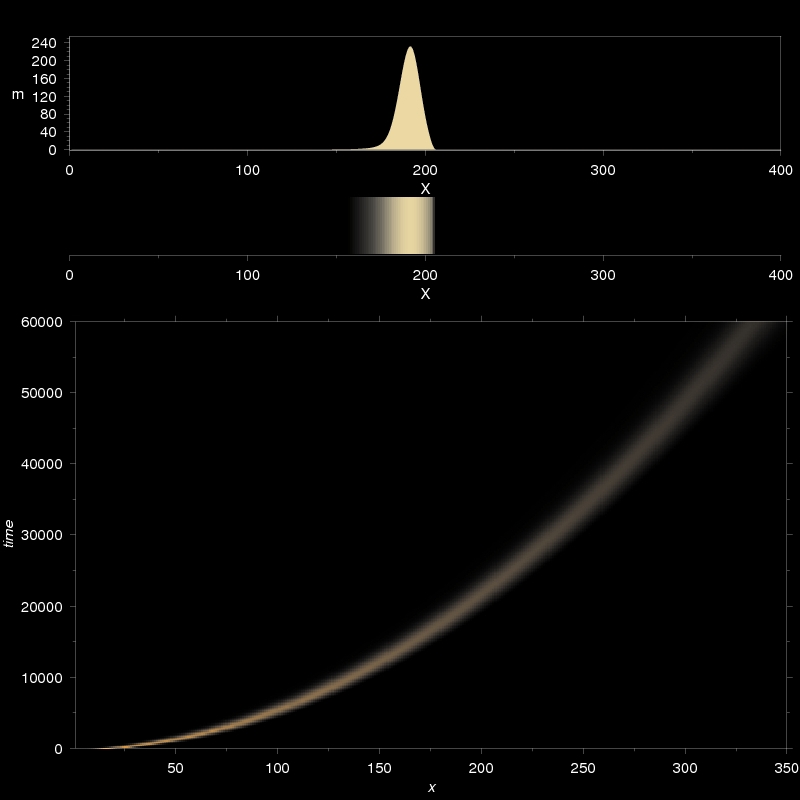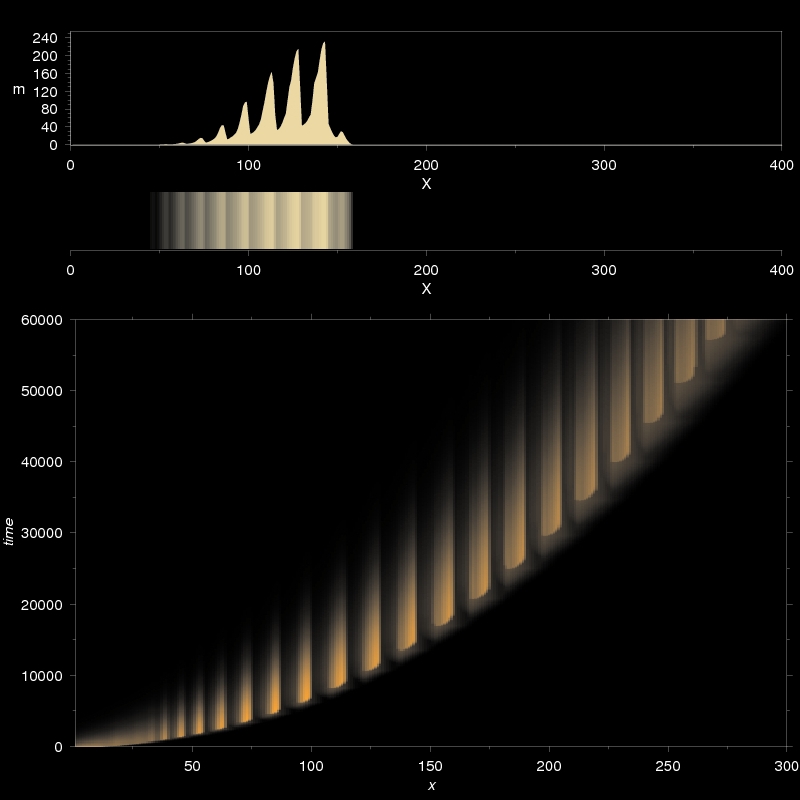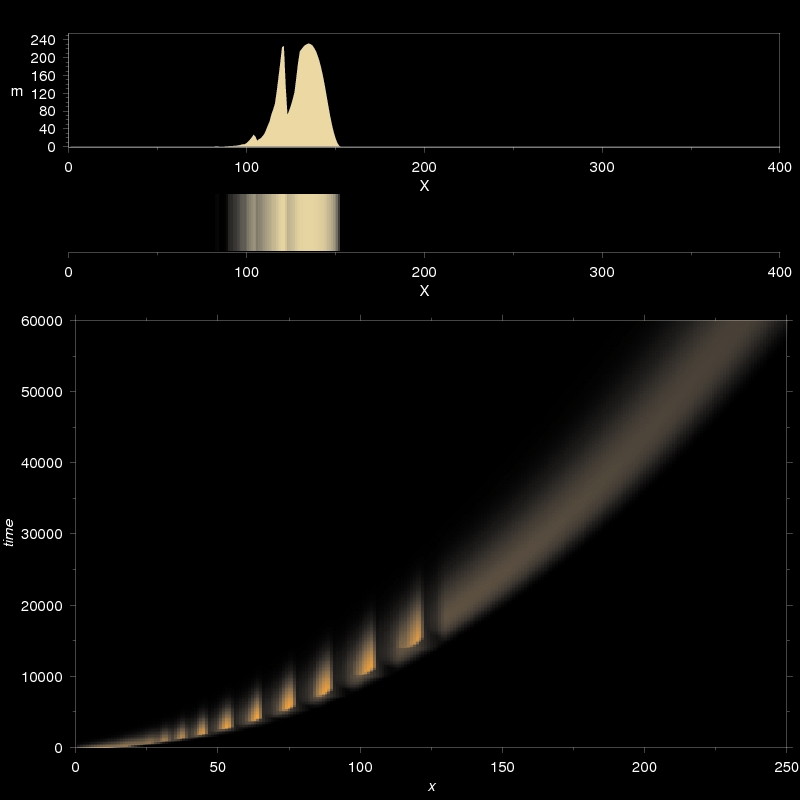Heterogeneous traveling waves
In certain systems the precipitate can be redissolved in the surplus of the outer electrolyte by complex formation. In these cases a so called heterogeneous traveling wave "runs" through the diffusion column.
The movement of the wave is certainly only apparent: on one side new precipitate is formed while on the other the crystalline reaction product goes into complex formation with the surplus of the outer electrolyte and disappears.
Depending on the experimental parameters the resulting heterogeneous traveling wave can have three different forms. The figures below show these three patterning modes and the corresponding evoluton diagrams.
Solitary wave without structure
In the most simple case the wave does not have any remarkable internal structure.

Moving set of precipitate zones
If the redissolution is relatively slow the moving precipitated zone is a fragment of a normal Liesegang pattern with several internal stripes.

Transition between patterned and solitary mode
Finaly - just like in case of other anomalous patterning modes - there is a transition region between the above mentioned two forms. In such systems a simple solitary wave without an internal structure starts to run through the gel but at a certain point it transforms into a structured one.
